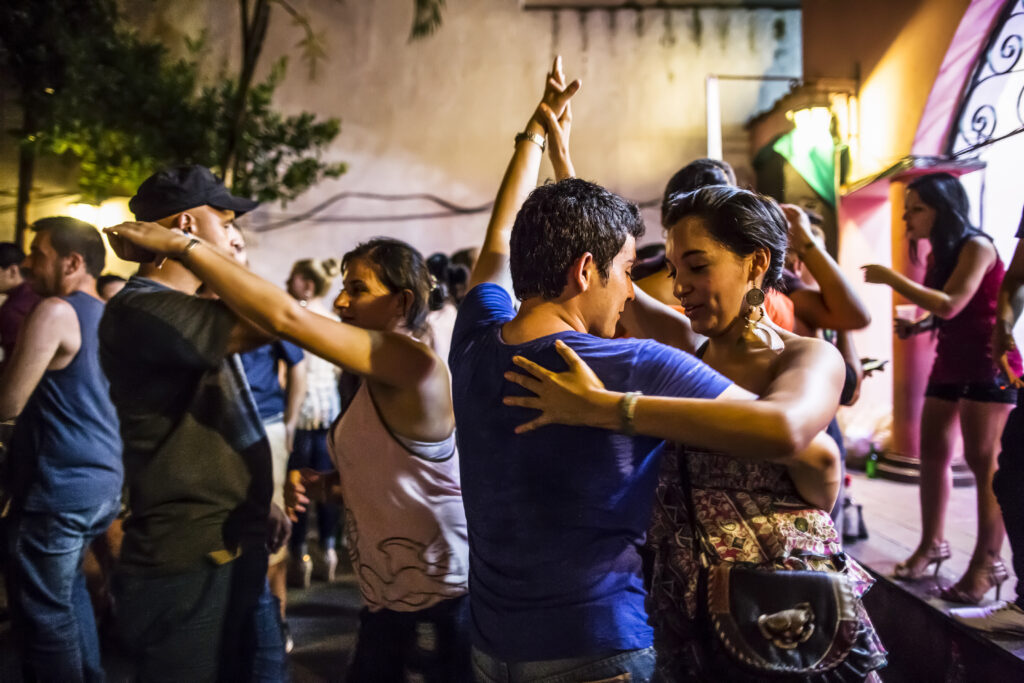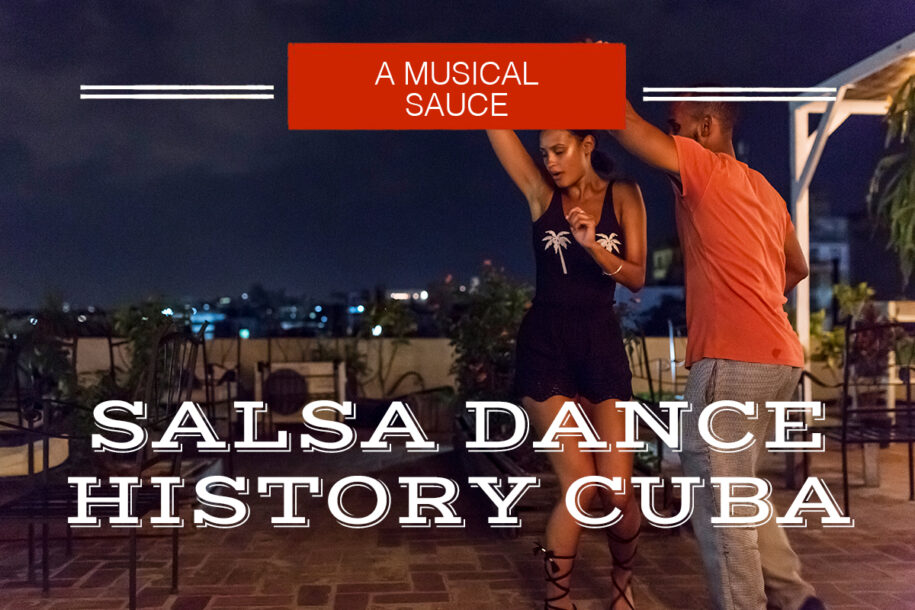
Not everyone in Cuba can dance Salsa, but those who can, well it’s mesmerizing to watch. Learning Salsa doesn’t just begin and end in a Salsa class. So let’s explore the rich and varied story of salsa dance history and Cuba.
Salsa and Son
Salsa music is in fact the son of… Son. Son music was born in Santiago de Cuba in the late 19th century. It was a combination of existing music styles, Nengón and Kiribá, which made use of African influenced percussion. After Son began to become popular across the rest of Cuba, it began to be influenced by Rumba. Rumba was perhaps the dominant style of music in Havana. A turning point in Salsa dance history was when Cuban style music began to become popular in the 1950’s. Cuban migrants brought their music with them to the US. So in New York and Miami Rumba became well known. In the 1970’s, slower Cuban style music that was easier to dance to began to make its way into clubs and dance halls. It was generally referred to as salsa.
Salsa or Sauce?
Salsa literally means sauce in Spanish and it’s appropriate, since Salsa music is really a sauce. It’s mixed together from other styles of Cuban music, with heavy Puerto Rican influence. “Salsa” was apparently a term selected by record label marketing departments to describe Cuban style music that wasn’t Rumba. In Cuba you will hear traditional Salsa music. But it might not even be described as Salsa by the musicians playing it.
Salsa Dance History: It’s Not That Old
In terms of Salsa dance history, it’s interesting to think that Salsa is reasonably new, and yet it has musical roots that go back for centuries. Salsa music wasn’t even really known in the rest of the world until around 40 years ago. Popular Latin American musicians such as Gloria Estefan, Ricky Martin and Shakira have used Salsa elements in their music. Salsa music features heavily on the charts and radio airwaves in Latin American countries. It’s not seen as an alternative type of music – it’s totally mainstream.
The popularity of Salsa dancing as a form of exercise is kind of a new phenomenon. It’s fun and low impact, making it suitable for all levels of physical fitness. Although some Salsa music is performed as slowly as 70 beats per minute it can go up to 140 bpm. But this would send all but the most accomplished dancers wheezing to the sidelines.
Salsa and Latin Dance
While Salsa dancing is perhaps not something you would use on an evening out at a nightclub, it can still be a great skill to have. Salsa teaches rhythm and confidence, which can be utilized in any form of dancing. Salsa dancing also shares a number of similarities with other forms of dance from Latin America. Dances such as Tango, Cha Cha, Cha, Mambo and Samba.
So if you learn Salsa, you’ll find it quite easy to pick up these other styles. While you won’t have any difficulty finding local dance centers that teach Salsa, maybe consider a trip to Cuba to learn the dance from the masters? In Cuba you’ll see locals strut their stuff, often right out on the street, or in a sultry bar with amazingly cheap Mojito’s.
Learn the Rhythm
Salsa dancing can be a raw form of musical and physical expression. It has its roots in the dance halls of Cuba and Puerto Rico and can have a gritty, emotional quality. Even if you don’t want to take lessons, you can still find a number of instructional videos online. Then next time you’re out somewhere and the Latin beat begins to echo through the loudspeakers those Salsa lessons will come to life. Let’s not forget, salsa can also be a dance of seduction…
